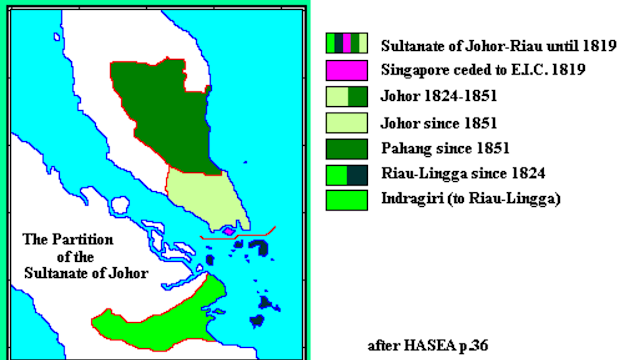As part of the Johor-Riau Sultanate, Singapore continued its role as a trading port and it did not lose its trade connection with other parts of the region, especially China. This is evident from my research on the internet that artifacts from China were found in Singapore that date back to the 16th and 17th centuries. I found on the internet a report on artifacts found at the Padang and the St. Andrew's Cathedral Churchyard in 2003 to 2004. Based on the report, artifacts uncovered include imported porcelain and stoneware from China and Chinese coinage. Besides the Chinese stoneware and coinage, it was reported that a Johor Military Regalia was found (refer to picture below). This finding suggests that Singapore had military links to Johor in the past and Johor had connections with Singapore.Temasek also served as a midway meeting point for traders from Middle East< India and China ton exchange their goods. This meant that traders did not have to travel long distances to each other's countries to trade. Temasek became an important entrepot and meeting point for traders. This was because Temasek experienced monsoons at different times of the year. Monsoon winds enabled traders to sail from their own countries to different parts of Asia.
According to a news article from Straits Time on 14 Feb 2015, archaeological dig in Empress Place and found a rare gold coin from the 16th to 17th century Johor Sultanate. A picture of the gold coin reproduced below, showed that it is no bigger than a current Singapore five-cent coin. Based on the news article, it is believed to be a kupang coin from 16th-century Johor. This is another evidence to show Singapore's connection to Johor-Riau Sultanate, that Singapore in the 16th to 17th century probably was using the Johor-Riau Sultanate's currency to trade with other countries.
These internet findings further enriched my knowledge (from my history class) that Singapore was indeed part of the Johor-Riau Sultanate back in the 16th to 17th century.


